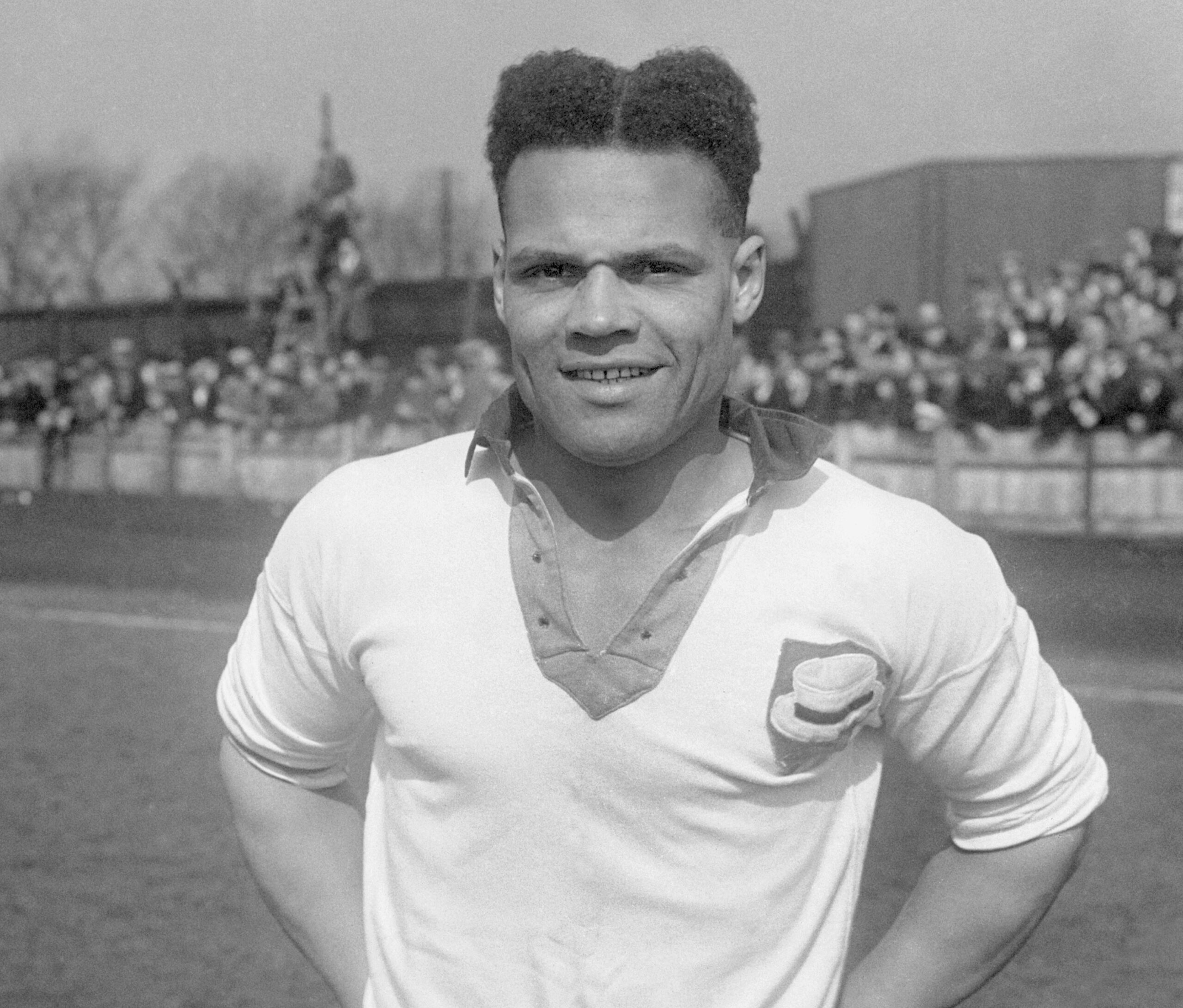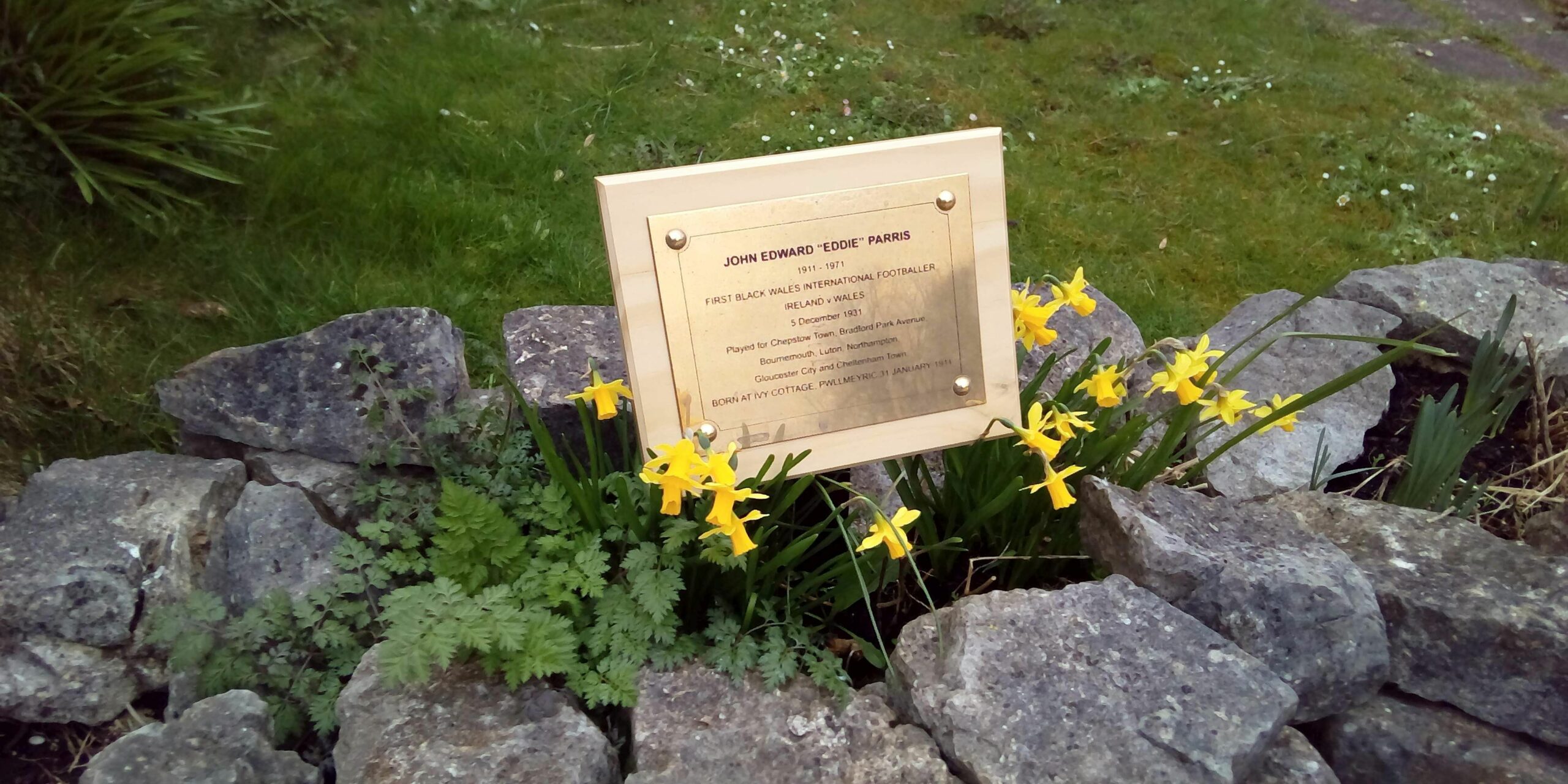Black Heroes: John Edward ‘Eddie’ Parris, The First Black Welsh International Footballer
Eddie Parris was a pioneer of Welsh football, a man ahead of his time. He was born on January 31st 1911, at Ivy Cottage, Pwllmeyric. He was the first son of Edward Parris and Annie Alford. Edward was a black man from Barbados born just a generation past slavery. Annie was a white woman from the midlands. They were worlds apart, but married in 1909.
A mixed marriage almost 40 years before Windrush. This made Edward and Annie pioneers in their own right. Like their son, also ahead of their time. However, being pioneers, especially during the interwar period was fraught with danger.

Eddie Parris during his time at Luton Town, where he had a short spell before the outbreak of WWII ( Picture: South Wales Argus )
There was a belief in racial hierarchy. People from ethnic minority backgrounds were treated as second class citizens. The 1919 South Wales Race Riots, which resulted in five deaths and 250 arrests, evidenced this notion.
The Times, 17th June 1919
“Fighting broke out after a black man had allegedly insulted a white woman. Trouble spread, shots were fired, black men’s windows were smashed, and two houses were emptied and their furniture burnt. A crowd shouted racial abuse and one woman was told she should be burned because she was married to a black man.”
“Fighting broke out after a black man had allegedly insulted a white woman. Trouble spread, shots were fired, black men’s windows were smashed, and two houses were emptied and their furniture burnt. A crowd shouted racial abuse and one woman was told she should be burned because she was married to a black man.”
That didn’t stop Eddie Parris, who would make his professional debut for Chepstow Town in 1927 at the age of just 16. He was described as a tenacious left-winger with great speed and dribbling ability. This led to him eventually signing for Second Division side Bradford Park Avenue in 1929. There he went on to make 139 appearances, scoring 39 goals.
His greatest achievement came on December 5th 1931, when he made his first and only appearance for Wales in a 4-0 loss to Ireland in Belfast. He was the youngest man on the pitch that day, and the first black man to ever sport the red shirt of Wales.
It was reported that Parris had a poor game against Ireland. A writer from The Scotsman concluded at the time that Parris was ‘not up to international standard’. Considering Wales lost 4-0 it would have been difficult to label any player as ‘up to international standard’. But I digress.
Parris still finished the 1931/32 season as Bradford’s top scorer with 13 goals. The following season he netted a further 15 goals. However, a second opportunity to showcase this form for his country wouldn’t come.
Race was the primary factor for this. After all, Eddie Parris and Jack Leslie were the only two black players who were regulars in the Football League during that period . But unlike Parris with Wales, Leslie was never capped by England.
Jack Leslie received an England call-up in 1925 but was never capped, his family received a posthumous England cap on his behalf on March 26 2023
Leslie was often referred to as ‘Darkie Leslie’ throughout the 1920’s, despite his status as a regular within the Football League.
Jack Leslie made 401 appearances for Plymouth Argyle between 1921 and 1935, scoring 137 goals
British culture was inherently racist during the interwar period. Historians estimate that the UK’s 1945 black population was between 10,000 – 30,000. While the total UK 1945 population was 48.5 million.
Most people in the country would have never had personal contact with anyone of colour. In fact, in 1929, when Leslie’s Plymouth and Parris’ Bradford were scheduled to meet in the Cup, the press labelled it as the ‘Coloured Cup-Tie’.
Leeds Mercury, 25th January 1929
“Bradford and Plymouth Argyle meet in tomorrow’s Cup-ties. Each club possesses a coloured player. Leslie, of Plymouth, is on the left, and Parris, of Bradford, is on the right.”
“Bradford and Plymouth Argyle meet in tomorrow’s Cup-ties. Each club possesses a coloured player. Leslie, of Plymouth, is on the left, and Parris, of Bradford, is on the right.”
A Daily Mirror article in 1933, which focused on foreign players in British football even labelled Parris as ‘the dusky outside left of Bradford’.
The following year, while being praised in a match report by the Leeds Mercury, Parris was referred to as ‘the coloured player at outside left’.
Leeds Mercury, 8th January 1934
“It was fitting, too, that Bradford’s other goal was made by their other winger, Parris, the coloured player at outside left, who was another personality of the match. … It is surprising how often Parris has a hand in his side’s scoring efforts. Sometimes he may do surprisingly weak things; there were occasions in this game when he lost the ball without a Preston man near to take it from him. But one never knows when Parris may show a thrilling a burst of speed and either score or make the running for a goal”
“It was fitting, too, that Bradford’s other goal was made by their other winger, Parris, the coloured player at outside left, who was another personality of the match. … It is surprising how often Parris has a hand in his side’s scoring efforts. Sometimes he may do surprisingly weak things; there were occasions in this game when he lost the ball without a Preston man near to take it from him. But one never knows when Parris may show a thrilling a burst of speed and either score or make the running for a goal”
Injury would hamper Parris that same season. A lack of game time on his return meant he would then move to Third Division side Bournemouth and Boscombe Athletic in the summer of 1934. Back-to-back hattricks for the Cherries in the FA Cup would follow in 1935. But a second Wales cap wouldn’t.
In fact, after Parris’ appearance for Wales in 1931, 48 years would pass until the second black man, George Berry was capped by Wales. A whole generation and more – who had little to no knowledge of Parris because like many other black pioneers throughout history, his story was not told.
George Berry, the second black welsh international footballer reading about his Wales call-up in a local newspaper
Spells at Luton and Northampton Town would follow for Parris upon leaving the Cherries in 1937. But the outbreak of World War II would quickly halt the career of the then 28-year-old. Parris would then relocate to Gloucester and play his part in the war effort by working at a local aircraft factory.
He continued playing football throughout the war for the factory team. However, by the time WWII came to a halt in 1945, age and attrition had kicked in. The reality of a second Wales cap was now behind him. But Parris continued playing with short spells at Bath City and Cheltenham Town. He eventually ended his playing career at Gloucester City in 1948, at the age of 37.
A 21-year footballing career interrupted by war. 268 league appearances, 60 goals. An admirable feat from the coloured kid born in Pwllmeyric during the infancy of the 20th century. Where just living to see adolescence would not have been a straightforward task.

A commemorative plaque honoring Eddie Parris in his hometown Chepstow ( Picture: John Charters )
After football Parris would relocate to Sedbury and return back to the aircraft industry, where he worked right up until his death in 1971, aged just 60. He would never live to see fruits of his labour, when George Berry would follow in his footsteps and sport the red shirt of Wales in 1979.
In that sense, he was the forgotten man of Welsh football. This maybe explains why very little in the form of photography exists of him at the FAW. But forgotten no more. John Edward Parris. The unsung black hero. The first black Welsh international footballer.